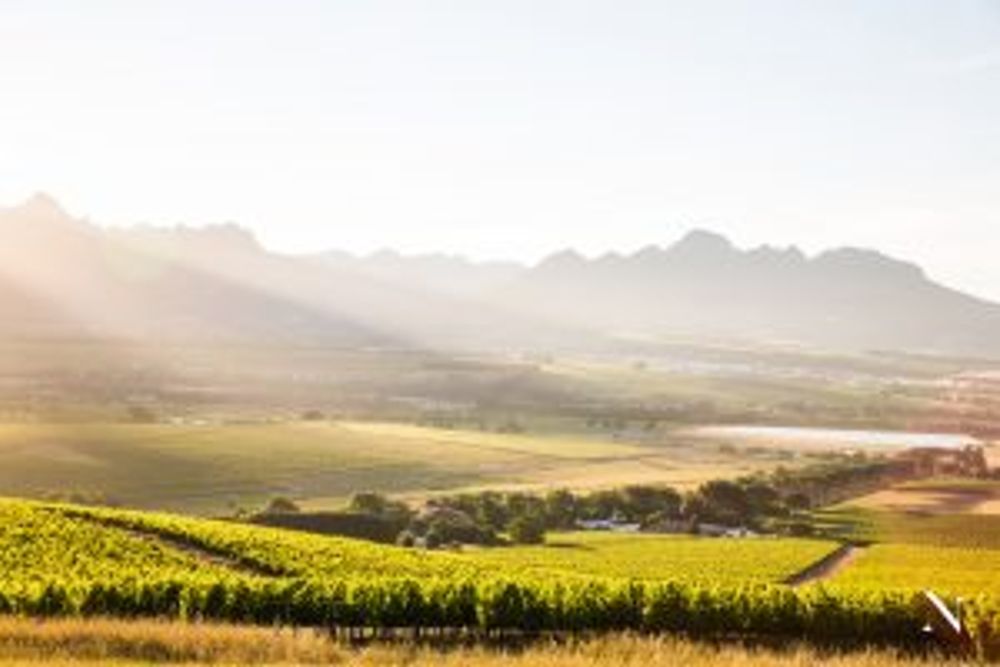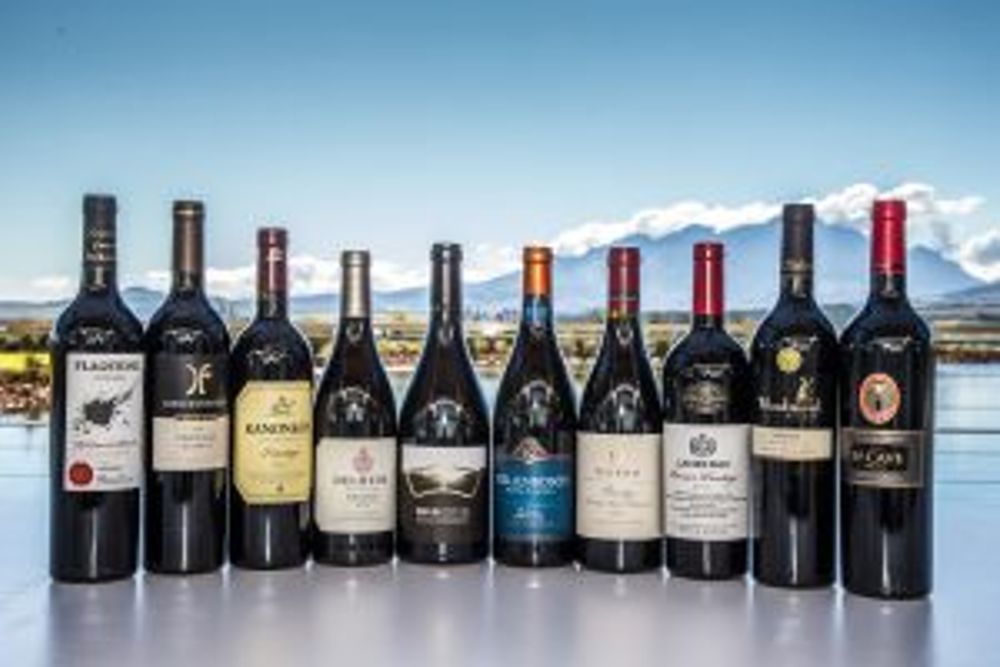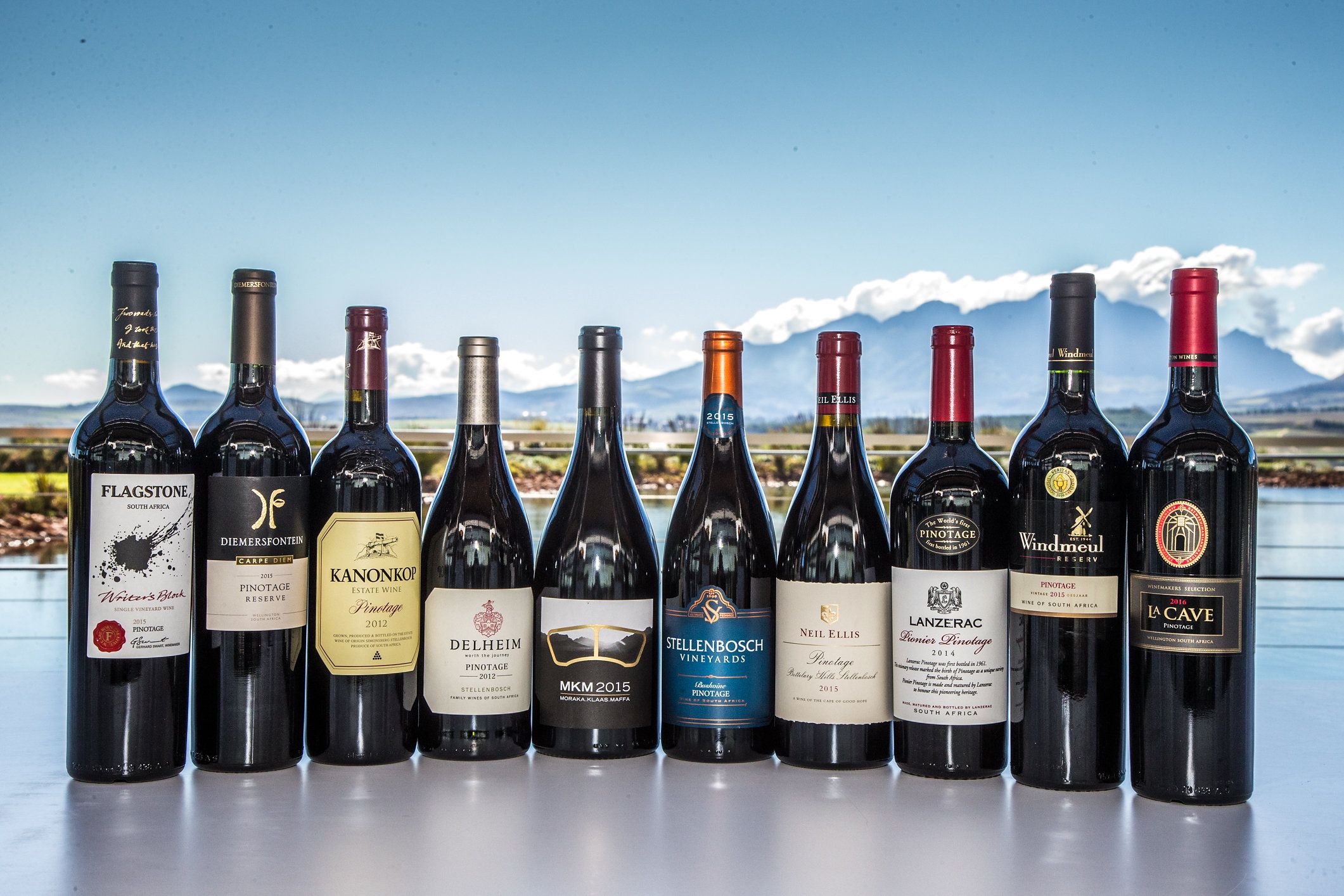Lanzerac, Kanonkop, Delheim, Diemersfontein, Flagstone, Moreson, Neil Ellis, Stellenbosch Vineyards, Wellington Wines and Windmeul were the ten Pinotage producers represented at the lunch.

Neethlingshof Pinotage vineyards, South Africa
Pinotage is on the march again. That was the only conclusion I could draw after a memorable lunch at Roger Jones’ Michelin-starred restaurant, The Harrow, in Little Bedwyn near Newbury, last month.
We drank either single varietal Pinotage or blends where Pinotage largely predominated, and were blown away by not just the quality but also how well the wines went with Jones’ outstanding cuisine. More on that later, but first what we drank, all available in the UK.

Freshly picked Pinotage
It has been fashionable in certain quarters – often unfairly – to deride Pinotage, a grape born in 1925 from a South African crossing of Pinot Noir and Cinsault by Abraham Perold.
While large-scale bulk production tended to yield a wine of little distinction, some wonderful examples of Pinotage were made not long after Lanzerac became the first to sell it commercially in 1959. Lanzerac and Kanonkop, were early flag-bearers – and indeed still are – for two of their labels made it into the 2017 ABSA top 10 Pinotage Wines, most of which were available for tasting at the lunch, courtesy of the Pinotage Association and Dr Winnie Bowman, Cape Wine Master.

The 2017 ABSA top 10 Pinotage Wines
What were the other eight wineries?
Delheim, Diemersfontein, Flagstone, Moreson, Neil Ellis, Stellenbosch Vineyards, Wellington Wines and Windmeul. An impressive line-up.
Kanonkop’s Pinotage 2012 went especially well with the starter: potato and leek soup with scallops and truffle. Soft tannins, appealing fruit, several layers and a long finish with great balance combined to make this a lovely wine. A fine blend from Pulpit Rock, the Louise Reserve 2013 (50% Pinotage, 45% Cabernet Sauvignon, 5% Shiraz) was also a good match thanks to its very soft tannins and velvety texture.
The second course, seared yellow fin tuna with anchovies and capers on top, found ideal accompaniment in some Lanzerac Pionier Pinotage 2014 and Flagstone Dragon Tree 2014, a blend of 30% Pinotage, 32% Cabernet Sauvignon, 31% Shiraz, 5% Malbec and 3% Merlot. While the former was rich, soft and voluptuous with a salty freshness, the latter was multi-layered with glorious fruit.
The main course, grouse, found a good match in Moreson’s MKM Pinotage 2015 (named after a long-serving employee, Moraka Klaas Maffa). Made by Clayton Reabow, this complex wine needs time for its grippy tannins to soften but it is designed to go with a big steak. Beyerskloof Faith 2014, a blend of 34% Pinotage, 33% Cabernet and 33% Merlot, was perhaps an even more fitting partner, showing wonderful intensity and great balance and length.

Dr Winnie Bowman, Cape Wine Master
A wide selection of cheeses, including some Stinking Bishop, were nicely counterbalanced by Flagstone Pinotage Writer’s Block 2015 and KWV’s big and bold Abraham Perold Tributum 2014 (30% Pinotage, 32% Shiraz, 21% Merlot, 13% Cabernet and 4% Petite Sirah). Gerhart Swart, who made the former from some very attractive red fruit, has fashioned a lovely wine with vivid acidity and a long finish. Izele van Blerk, who crafted the latter, can rightly claim her creation needs more time to evolve.
Other wines we drank with nibbles before lunch deserve mention. The Neil Ellis 2007 Vineyard Selection was a wonderful example of a mature single varietal Pinotage, showing glorious red fruit, beautifully integrated tannins and faultless balance. The fruit of the Neetlingshof 1999 was still fresh, although not quite as intense as the Ellis. A much younger wine, the Diemersfontein Carpe Diem Reserve 2015, exhibited some gorgeous red fruit, and yet elegance at the same time with its tannins superbly meshed.
Another blend needs a mention in despatches – the Idiom Collection 2014, made by Reino Thiart, which was opulent and velvety, with notes of black forest cake and raspberries/mulberries. Blessed with soft tannins, it had a long finish, being 42% Pinotage, 28 Cabernet, 25 Merlot & 5 Shiraz). KWV’s seductive 15-year old Potstill brandy, meanwhile, was made from 100% Pinotage grapes.
The four ABSA top 10 Pinotage wines we did not taste were: Delheim 2012 (made by Altus Treurnicht); Stellenbosch Vineyards Bushvine 2015 (Abraham de Villiers); Wellington Wines La Cave 2016 (Chris Smit & Francois van Niekerk); and Windmill Reserve 2015 (Abraham van Heerden). I have no doubt all of them will help to spread the word that the best Pinotage can provide some very fine wine.










































